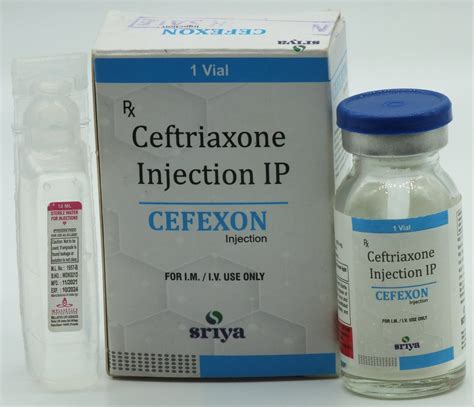Intro
Learn about Rocephin antibiotic shot, a cephalosporin injection treating bacterial infections, with info on dosage, side effects, and uses, including respiratory and skin infections.
The use of antibiotics has revolutionized the treatment of bacterial infections, saving countless lives and improving the quality of life for millions of people around the world. Among the various antibiotics available, Rocephin, also known as ceftriaxone, has emerged as a popular choice for treating a wide range of bacterial infections. In this article, we will delve into the world of Rocephin antibiotic shots, exploring their benefits, working mechanisms, and key information that patients and healthcare professionals need to know.
Rocephin antibiotic shots are commonly prescribed to treat bacterial infections such as pneumonia, meningitis, and skin infections. The medication belongs to the cephalosporin class of antibiotics, which work by inhibiting the growth of bacterial cell walls, ultimately leading to the death of the bacteria. With its broad-spectrum activity, Rocephin is effective against both Gram-positive and Gram-negative bacteria, making it a versatile treatment option for various infections. As we explore the benefits and mechanisms of Rocephin antibiotic shots, it is essential to understand the importance of proper use and administration to ensure optimal treatment outcomes.
The importance of Rocephin antibiotic shots lies in their ability to provide rapid and effective treatment for severe bacterial infections. In many cases, these infections can be life-threatening if left untreated or if treatment is delayed. Rocephin shots offer a convenient and efficient way to deliver the medication directly into the bloodstream, allowing for faster absorption and higher concentrations of the antibiotic at the site of infection. This can lead to improved treatment outcomes, reduced risk of complications, and faster recovery times for patients. With the rise of antibiotic resistance, it is crucial to use antibiotics like Rocephin judiciously, following proper guidelines and dosage recommendations to minimize the risk of resistance and ensure the continued effectiveness of these life-saving medications.
What is Rocephin?

Benefits of Rocephin
The benefits of Rocephin antibiotic shots are numerous, making it a popular choice for treating bacterial infections. Some of the key benefits include: * Broad-spectrum activity against Gram-positive and Gram-negative bacteria * Rapid and effective treatment for severe bacterial infections * Convenient and efficient administration via injection * High concentrations of the antibiotic at the site of infection, leading to improved treatment outcomes * Reduced risk of complications and faster recovery times for patientsHow Does Rocephin Work?

Administration and Dosage
Rocephin antibiotic shots are typically administered via intramuscular (IM) or intravenous (IV) injection. The dosage and administration schedule may vary depending on the specific infection being treated, as well as the patient's age, weight, and renal function. It is essential to follow the recommended dosage and administration guidelines to ensure optimal treatment outcomes and minimize the risk of adverse effects.Common Uses of Rocephin

Side Effects and Interactions
While Rocephin is generally well-tolerated, it can cause side effects and interact with other medications. Common side effects include: * Pain, redness, or swelling at the injection site * Diarrhea or nausea * Vomiting or abdominal pain * Headache or dizziness * Rash or itchingIt is essential to inform your healthcare provider about any medications you are taking, including other antibiotics, anticoagulants, and diuretics, as these may interact with Rocephin.
Precautions and Warnings

Resistance and Misuse
The misuse and overuse of antibiotics like Rocephin have contributed to the rise of antibiotic resistance. It is essential to use antibiotics judiciously, following proper guidelines and dosage recommendations to minimize the risk of resistance and ensure the continued effectiveness of these life-saving medications.Conclusion and Future Directions

Final Thoughts
As we reflect on the importance of Rocephin antibiotic shots, it is clear that these medications have revolutionized the treatment of bacterial infections. With their broad-spectrum activity, rapid absorption, and high concentrations at the site of infection, Rocephin shots offer a convenient and efficient way to deliver effective treatment for severe bacterial infections. However, it is essential to use these medications responsibly, following proper guidelines and dosage recommendations to minimize the risk of resistance and ensure the continued effectiveness of these life-saving medications.What is Rocephin used for?
+Rocephin is used to treat a wide range of bacterial infections, including pneumonia, meningitis, skin infections, and urinary tract infections.
How does Rocephin work?
+Rocephin works by inhibiting the synthesis of the bacterial cell wall, ultimately leading to the death of the bacteria.
What are the common side effects of Rocephin?
+Common side effects of Rocephin include pain, redness, or swelling at the injection site, diarrhea or nausea, vomiting or abdominal pain, headache or dizziness, and rash or itching.
